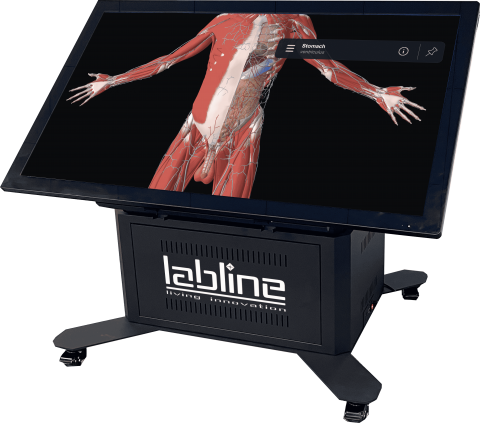
Are you ready to move beyond dusty textbooks and plastic models? The way we learn and teach human anatomy is undergoing a profound revolution, thanks to incredible advancements in visualization technology. Enter the 3D Anatomy Table, specifically the Cyber Anatomy Board—an interactive platform that’s changing the game for students, educators, and medical professionals worldwide.
What is the Cyber Anatomy Board?
The Cyber Anatomy Board is essentially a large, high-resolution touchscreen display designed to function as a virtual dissection and anatomy learning tool. It’s often referred to as an Interactive Anatomy Table because it allows users to manipulate, dissect, and explore highly detailed, life-sized 3D models of the human body with simple gestures.
Unlike static images or limited models, this technology offers an unprecedented level of immersion and detail, providing a comprehensive and engaging learning experience.
Why the Interactive 3D Anatomy Table is a Game-Changer
1. Interactive, Realistic Dissection
The most compelling feature is the ability to perform a virtual dissection. Users can ‘peel back’ layers of skin, muscle, and fascia, revealing underlying organs, nerves, and vessels with incredible clarity. This process is risk-free, repeatable, and allows for the isolation and labeling of individual structures, a feature traditional cadaver labs often cannot replicate for every student.
2. Access to Diverse Models and Pathologies
A physical cadaver offers one specific view. The Cyber Anatomy Board, however, offers multiple male and female models, representing various age groups and body types. Crucially, it also allows educators to load real patient scans (CT/MRI) and visualize different pathologies and clinical cases. This bridges the gap between basic anatomy and clinical application.
3. Enhanced Collaboration and Engagement
The large format of the table encourages group learning and collaboration. Students can gather around the table, discussing and manipulating structures together. The visual nature and interactivity dramatically boost student engagement and retention of complex spatial relationships.
4. No Maintenance or Ethical Concerns
Running a traditional anatomy lab is resource-intensive and comes with significant ethical and preservation challenges. The digital nature of the Cyber Anatomy Board means no ongoing maintenance costs for specimens, no need for specialized facilities, and no ethical concerns related to using human remains.
💡 Key Features of the Cyber Anatomy Board
- Full 360-Degree Rotation: Explore any structure from every angle.
- Layer-by-Layer Removal: Systematically reveal deep structures.
- High-Resolution Zoom: Examine microscopic detail within organs.
- Systems Integration: View systems (skeletal, muscular, nervous, circulatory) in isolation or together.
- Real-Time Labeling and Annotation: Instantly identify and add notes to structures.
- Virtual Probes and Tools: Use virtual scalpels, pointers, and measurement tools.
Who is Benefiting?
- Medical and Nursing Students: Gaining a deeper, hands-on understanding before clinical rotations.
- Anatomy Educators: Teaching complex topics with a visual aid that captivates and clarifies.
- Surgeons and Residents: Planning complex surgeries by reviewing 3D models and patient-specific data.
- Physical Therapy/Chiropractic Programs: Visualizing musculoskeletal dynamics and injury sites.
🚀 Looking Ahead
The 3D Anatomy Table is more than just a teaching aid; it’s an evolution in medical education. As technology advances, we can expect these boards to integrate even more features, such as haptic feedback (simulating the sense of touch) and augmented reality overlays.
If you are involved in medical or science education, exploring the capabilities of the Cyber Anatomy Board is a must. It represents the gold standard for interactive, detailed, and accessible anatomical learning in the 21st century.
What are your thoughts on interactive anatomy tables? Have you had a chance to use one? Share your experiences in the comments below!
